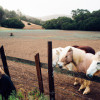
Exploring the intricacies of the deep-seated bond between humans and domesticated animals that has evolved over millennia. This relationship is not merely about ownership, but rather a symbiotic connection that impacts both our psychological and physiological health.
A Historical Overview of Domestication
The process of animal domestication began around 10,000 years ago when our hunter-gatherer ancestors transitioned to settled farming communities. Animals were initially domesticated for practical purposes such as food, work, and transportation. However, over time, the relationship between humans and domesticated Animals evolved into something far more complex and emotional. Our ancestors realized the enormous potential these animals held in forming social bonds, offering companionship, and even aiding in therapy and rehabilitation. Today, animals not only serve practical roles in our society but also act as our companions, friends, and emotional pillars.
The Symbiotic Relationship with Pets
The relationship between humans and their pets, particularly dogs and cats, today is a clear representation of a symbiotic bond. Pets depend on us for food, shelter, and care. In return, they provide us with companionship and unconditional love. Pets can also have a profound positive impact on our health, helping to lower stress levels, increase fitness and improve overall happiness and well-being. These benefits have been scientifically validated in numerous studies. The physical and emotional bond shared with pets can be a powerful form of stress relief, and the act of petting or playing with a pet can elevate levels of serotonin and dopamine, which are nerve transmitters known to have calming properties.
Livestock: A Dependable Relationship
While pets are often seen as family members, the relationship between humans and livestock animals such as cattle, pigs, sheep, and chickens, is more focused on utility and survival. Livestock animals provide us with a myriad of resources such as food, clothing, and even fertilizer. Despite the nature of this relationship, many farmers and ranchers develop a deep affinity and respect for their animals. Healthy, happy animals can lead to a healthy, productive farm, and therefore, the welfare of livestock is a crucial element in sustainable farming.
Service Animals: An Indispensable Bond
Another important aspect of the human-animal connection is evident in service animals. These animals are trained to aid individuals who have disabilities, such as visual impairment, mobility issues, or mental health disorders. The bond between a service animal and its human is crucial. These animals provide not only practical aid but also emotional support, which can greatly boost the independence and confidence of those they serve. The proven effectiveness of animal-assisted therapy in enhancing human health and well-being exemplifies the valuable role service animals play in our society.
Conservation and Wildlife
Our relationship with domesticated animals also influences the way we interact with wild animals. Our actions towards pets and livestock can shape our attitudes towards wildlife and conservation. In many communities around the world, local wildlife has been domesticated and integrated into community life, demonstrating a holistic approach to the human-animal relationship. However, as humans, we must ensure that our relationship with domesticated animals is not detrimental to wildlife populations, and we must work towards co-existing in harmony with all creatures.
The Future of Human-Animal Relationships
As science continues to explore and understand the depth of our relationships with domesticated animals, our approach towards these animals will likely evolve. Emphasizing animal welfare and respecting the rights of animals will continue to play a role in shaping our interactions and relationships with them. The trend towards seeing and treating pets as family members will likely continue to grow, and the value of service animals in therapy and rehabilitation will increase. Our relationship with domesticated animals is changing, mirroring societal changes and scientific advancements. However, the underlying essence of this relationship, rooted in a mutual symbiotic bond, will remain steadfast.
















